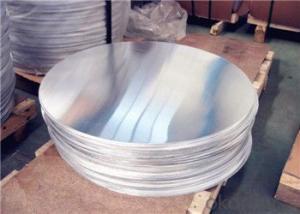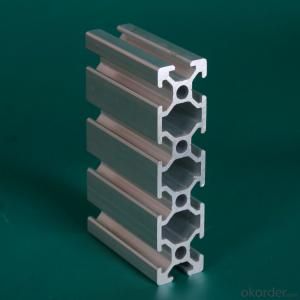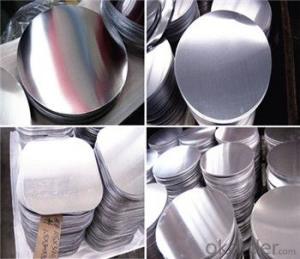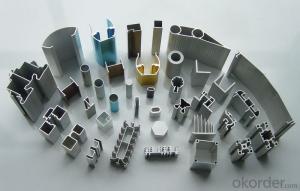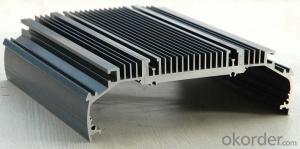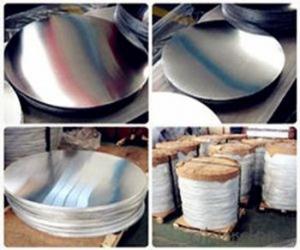Extruded Aluminum Bar Stock
Extruded Aluminum Bar Stock Related Searches
Led Light Bulbs For Ceiling Fixtures Led Lamps For Ceiling 42 In Ceiling Fan With Light Aluminum Coil Stock For Gutters Aluminum Foil For The Grill Hole Saw For Aluminum Plate Aluminum Tread Plate For Trailer Bow Plate For Aluminum Boat Aluminum Foil For Grow Room Aluminum Foil For Joint PainHot Searches
Stock Price For Aluminum Aluminum Coil Stock For Sale Aluminum Gutter Coil For Sale Used Aluminum Scaffolding For Sale 1/4 Aluminum Plate For Sale Aluminum Bar Stock For Sale Aluminum Round Stock For Sale Aluminum Diamond Plate For Sale Aluminum Scaffolding For Sale Craigslist 6061 Aluminum Plate For Sale Aluminum Dock Plate For Sale 7075 Aluminum Plate For Sale Aluminum Tread Plate For Sale Aluminum Checker Plate For Sale Aluminum Plate For Sale Near Me Plate Aluminum For Sale Aluminum Plate For Sale Aluminum Square Stock For Sale Aluminum Flat Stock For Sale Billet Aluminum Stock For SaleExtruded Aluminum Bar Stock Supplier & Manufacturer from China
Okorder.com is a professional Extruded Aluminum Bar Stock supplier & manufacturer, offers integrated one-stop services including real-time quoting and online cargo tracking. We are funded by CNBM Group, a Fortune 500 enterprise and the largest Extruded Aluminum Bar Stock firm in China.Hot Products
FAQ
- Yes, aluminum profiles are suitable for use in transportation vehicle bodies. Aluminum is a lightweight and durable material that offers several advantages for transportation applications. First, its lightweight nature helps to reduce the overall weight of the vehicle, which in turn improves fuel efficiency and lowers emissions. Second, aluminum profiles have excellent strength-to-weight ratio, making them strong enough to withstand the stresses and loads experienced by transportation vehicles. Additionally, aluminum is resistant to corrosion, which is particularly beneficial for vehicles that are exposed to harsh environmental conditions. Moreover, aluminum profiles can be easily formed and shaped into complex designs, allowing for flexibility in vehicle body construction. Overall, the use of aluminum profiles in transportation vehicle bodies offers numerous benefits and is a popular choice in the industry.
- What are the aluminum profile manufacturers in Jiangsu?
- For the choice of aluminum profiles, here are a few suggestions for you to refer to:First: very cheap, do not chooseAs follows: the cost of industrial aluminum material = the spot price of aluminum ingot, the processing cost of extrusion aluminum material, the freight of packing material. These are transparent, the cost of aluminum profiles are similar, significantly lower than the market price, the first possibility: the weight per meter less; second: aluminum is the use of recycled materials; third: material loss amplification (not according to the actual sales amount of meters).Second: only understand the sale material supplier does not chooseExplain as follows: preparing goods, recruit a few operator, big online promotion can be opened. Those who are often hurt are our buyers. Miss wiring mostly do not know how to use, only know the unit price. How to use to meet customer needs; how to make the most cost-effective; in different venues that kind of connection is the best; these are they can not answer accurately. Only know the cheapest and recommended profile connection the cheapest; this connection is the lowest cost, but the cost of artificial, a connection is the weakest, aluminum convenience wouldn't be reflected, and will bring much trouble for the future reconstruction. But the wiring girl will push it one way.Third: in production of aluminium supplierExplain as follows: in the production of aluminum suppliers, are generally engaged in this industry for more than 10 years, and their users have very rich experience, have a good understanding and knowledge of the quality and performance of products, suitable for the requirement of the customers will recommend price is a good product, choose a convenient and practical accessories.
- Aluminum profiles offer a range of surface finishing options, each with its own advantages and visual appeal. Some commonly used options include: 1. Anodizing: By creating a protective oxide layer through an electrochemical process, anodizing enhances corrosion resistance and provides various color choices. Anodized aluminum profiles are long-lasting, easy to maintain, and have a sleek, attractive look. 2. Powder Coating: This method involves applying dry powder to the aluminum profile's surface and then curing it with heat. The result is a durable, decorative finish that resists chipping, scratching, and fading. Powder coating offers a wide range of colors and can be customized for different textures and effects. 3. Polishing: Achieving a high-gloss, reflective appearance, polishing involves using abrasives and compounds to remove imperfections. This mechanical process creates a mirror-like finish, often used for decorative purposes where a shiny look is desired. 4. Brushing: By using abrasive brushes or pads, brushing creates a textured, brushed finish on the aluminum profile. This method produces parallel lines or circular patterns, providing a unique and stylish appearance. Brushed finishes are commonly used in architectural and interior design applications. 5. Electrophoretic Coating: Also known as e-coating, this immersion process involves applying an electrically charged paint to the aluminum profile. This ensures uniform coating thickness and excellent corrosion resistance. E-coating provides a smooth, even finish and is frequently used in automotive and industrial settings. 6. Wood Grain Effect: Aluminum profiles can be treated with a special coating to mimic the appearance of wood grain. This option is popular in architectural applications where the durability and low maintenance of aluminum are preferred over natural wood. These are just a few of the available surface finishing options for aluminum profiles. The choice of method depends on the desired appearance, functionality, and intended application of the profile.
- Fire safety considerations must be taken into account when using aluminum profiles. Although aluminum itself is not combustible, it can still contribute to the spread and intensity of a fire if not adequately protected or used in suitable applications. One important factor to consider is applying fire-resistant coatings or treatments to the aluminum profiles. These coatings can enhance the profiles' fire resistance, reducing the likelihood of ignition and slowing down the flames' propagation. Fire-resistant coatings also play a crucial role in preventing the release of toxic gases or fumes during a fire, ensuring the safety of occupants. Furthermore, when incorporating aluminum profiles into structures, their proximity to potential fire sources or ignition points should be carefully evaluated. Implementing appropriate measures for fire compartmentation and separation is crucial to hinder the rapid spread of fire. Depending on the specific application and building codes, these measures may involve using fire-resistant barriers, firestops, or fire-rated walls. Moreover, selecting fire-resistant materials for components used in conjunction with aluminum profiles is of utmost importance. This includes opting for fire-rated glass, insulation materials, and sealants that can withstand high temperatures and impede the fire's advancement. Regular maintenance and inspection of aluminum profiles are also critical to ensure their fire safety. This involves thorough checks for damages, corrosion, or wear that could compromise their performance during a fire event. In conclusion, while aluminum profiles can be used safely in various applications, it is essential to consider fire safety measures and comply with building codes and regulations to minimize the risk of fire incidents. Seeking guidance from fire safety experts or consultants can provide valuable assistance in implementing appropriate fire safety considerations when utilizing aluminum profiles.
- Yes, aluminum profiles can be used for access control systems. Aluminum is a versatile and durable material that is commonly used in construction and various industries. It offers excellent strength-to-weight ratio, corrosion resistance, and can be easily shaped and fabricated. When it comes to access control systems, aluminum profiles can be utilized for the construction of doors, frames, and enclosures. These profiles can be designed to accommodate various components such as locks, hinges, control panels, and readers. The lightweight nature of aluminum makes it suitable for door and frame construction, as it allows for easy installation and maintenance. Additionally, aluminum profiles can be finished with different coatings to enhance their appearance and protect them from harsh environmental conditions. Anodizing, for example, can provide a durable and corrosion-resistant surface that can withstand constant use and exposure to the elements. Furthermore, aluminum profiles can be customized to meet specific design requirements. They can be easily cut, drilled, and assembled, allowing for flexibility in creating access control systems that fit the desired aesthetics and functionality. In summary, aluminum profiles are a suitable choice for access control systems due to their strength, lightweight nature, corrosion resistance, and versatility in design. They offer durability and can be easily customized to meet specific requirements, making them a reliable and practical option for securing access points.
- What screws do you use for aluminum alloy profiles?
- Aluminum alloy profiles are generally: with electric nails, self tapping screws fixed. Do not use ordinary screws, tools should also be chosen.Self tapping screws are used for non metal or soft metal, without backing holes and tapping; self tapping screws are pointed, so that they can be self tapping; ordinary screws are flat head, and the thickness is the same.Classification of aluminium alloy sections by use:Construction aluminum profiles (divided into two types of doors and windows and curtain wall).Radiator aluminum profile.General industrial aluminum: mainly used in the manufacture of industrial production, such as automation equipment, covering the skeleton and the custom mold machinery and equipment according to their own requirements, such as assembly line conveyor belt, hoisting machine, glue machine, testing equipment, shelves and so on, electronic machinery industry and clean room with.Aluminum alloy profile of railway vehicle structure: mainly used for rail vehicle body manufacturing.
- What is the difference between aluminum alloy and 6063-T5 6060-T66?
- 6060-T66, higher strength, average mechanical performance is higher than T6 under 20-30Mpa condition [T66 is in T6 (solid solution strengthening + fully artificial aging) condition, strengthened by special process status - in European standard can be found] 6063-T5 is the most common aluminum alloy and delivery condition, and most of the architectural profiles are applied
- Yes, aluminum profiles can be used for security doors and windows. Aluminum is a lightweight and durable material that can withstand force and resist corrosion. It can be customized to include additional security features such as multi-point locking systems, reinforced frames, and impact-resistant glass. Additionally, aluminum profiles offer a sleek and modern appearance, making them a popular choice for security doors and windows in residential and commercial properties.



































